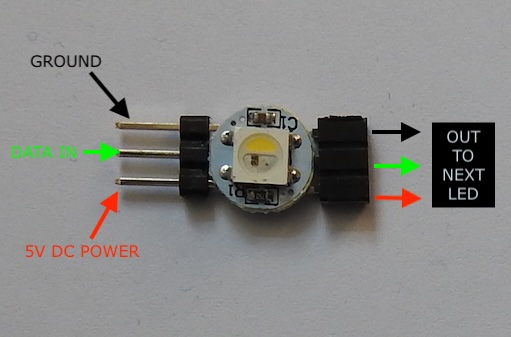How To: Connect LEDs
Each LED device is a 5V DC unit which has a red, green, blue and (if RGBW) white LED in a single package. It requires 5V DC for power (positive and ground connections), plus a Data In connection from the controller (or previous LED) which tells it what and brightness to be.
Each LED therefore has the following 4 connections:
|

|
Example simple wiring:

Note the arrows printed on the strips / LEDs indicating the direction for the Data connections
In the example above, the first LED on the left would be numbered LED 1, the next LED 2 etc.
Alternative wiring:
Also note that it is possible to power the LEDs / strips without necessarily taking power from the previous section; power is wired in parallel. Only the Data connection needs to be in a series daisy chain. (This becomes important when using large numbers of LEDs, to prevent voltage drop, or to power some LEDs separately to the controller)

Interlocking Connectors:
The controllers are shipped with a female connector, to which you can connect your first LED if using the interlocking LEDs / strips, plus you can use interconnecting cables to extend the distance between LEDs / strips:
Other LED types
All LEDs have the same basic 4 connections (positive power, ground, data in, data out). In the case of the 5mm round LED types, there is no additional power/ground connections, so you will usually want to double up power connections:
